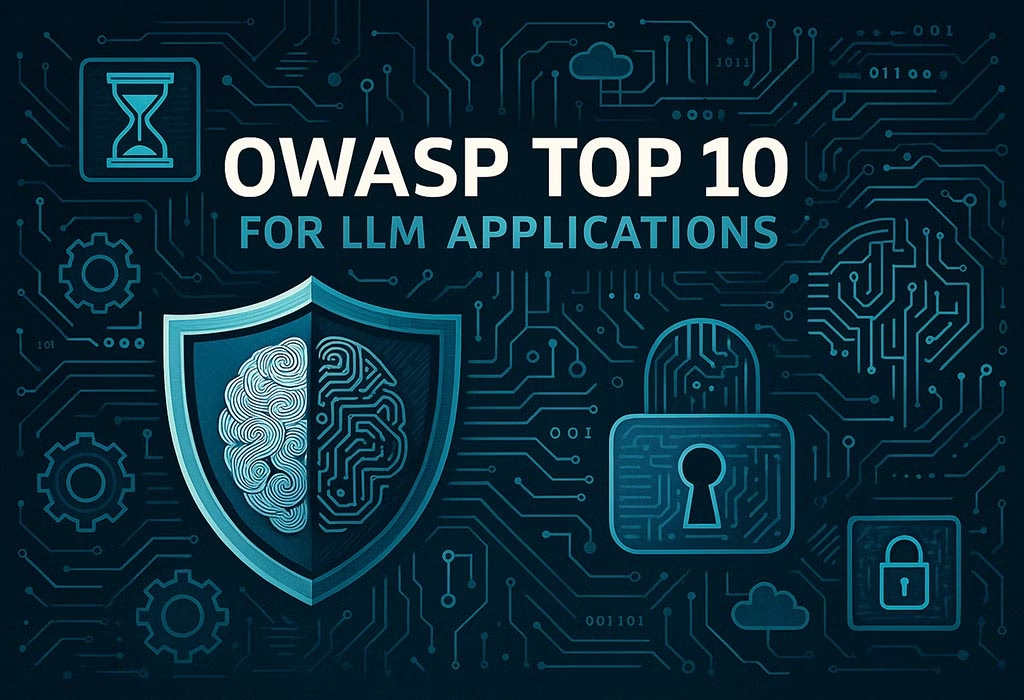
The increasing use of Large Language Models (LLMs) across various applications has revolutionized how we interact with technology, from virtual assistants to advanced data analysis tools. However, like any emerging technology, LLMs present unique security challenges. The Open Web Application Security Project (OWASP) is a nonprofit foundation working to improve software security. Although OWASP is best known for its list of the top ten web application vulnerabilities, this conceptual framework can also be adapted to address the unique challenges posed by LLM applications.
Introduction
Applications utilizing Large Language Models (LLMs) are rapidly transforming the digital landscape, offering unprecedented capabilities in text generation, natural language understanding, and predictive analysis. As these applications become more integrated into business processes and daily life, their security becomes a primary concern. Drawing inspiration from OWASP’s approach to web application security, we explore how the principles of the “OWASP Top 10” apply to LLM applications, identifying unique risks and proposing mitigation strategies.
1. Injection
Injection vulnerabilities, such as SQL injection, may not directly apply to LLMs in the same way they do to traditional web applications, but LLM applications can be susceptible to command injections through malicious inputs designed to manipulate the model’s output.
Mitigation: Implement rigorous input sanitization and establish security controls to assess and filter requests before processing.
2. Broken Authentication
LLM applications that inadequately handle authentication can expose sensitive data or allow unauthorized access to model functionalities.
Mitigation: Ensure the implementation of strong authentication mechanisms and secure session management policies.
3. Sensitive Data Exposure
LLMs can accidentally generate or expose sensitive information based on the data they have been trained on or through interaction with users.
Mitigation: Apply data minimization techniques and ensure models are trained on datasets cleansed of sensitive information.
4. XML External Entities (XXE)
Although XXE vulnerabilities are more relevant to XML processing, LLM applications may interact with systems that process XML, presenting an indirect risk.
Mitigation: Minimize XML processing in LLM applications and ensure any XML processing is secure.
5. Broken Access Control
LLM applications may fail to properly implement access restrictions, allowing users to perform actions outside their permissions.
Mitigation: Implement a role-based access control (RBAC) model and ensure rigorous access verification at all access points.
6. Security Misconfiguration
Incorrect security configurations can expose LLM applications to various attacks, facilitating attackers’ access to sensitive data or functionalities.
Mitigation: Conduct regular security audits, follow best security configuration practices, and keep software updated.
7. Cross-Site Scripting (XSS)
In the context of LLMs, XSS can be relevant when applications display content generated by the user or the model on the web interface.
Mitigation: Properly escape generated content to prevent the execution of malicious scripts.
8. Insecure Deserialization
Insecure deserialization may not be directly applicable to LLMs, but applications interacting with LLMs may be vulnerable if they deserialize data from untrusted sources.
Mitigation: Avoid deserializing objects from untrusted sources and use secure coding practices.
9. Using Components with Known Vulnerabilities
LLM applications may rely on libraries or components with known vulnerabilities, which could compromise security.
Mitigation: Keep all dependencies up-to-date and conduct regular vulnerability scans.
10. Insufficient Logging and Monitoring
The lack of adequate logging and monitoring can hinder the detection of attacks or security breaches in LLM applications.
Mitigation: Implement a comprehensive logging and monitoring strategy that allows for early detection of suspicious activities.
Conclusion
As LLM applications continue to evolve, so do strategies for securing them. By adapting the OWASP Top 10 approach to the peculiarities of LLM applications, we can proactively address security risks and protect both users and systems from emerging threats. The key lies in implementing solid security practices from design through deployment and beyond, thus ensuring the integrity and confidentiality of systems in the age of artificial intelligence.
You can check the original link here: https://llmtop10.com/






